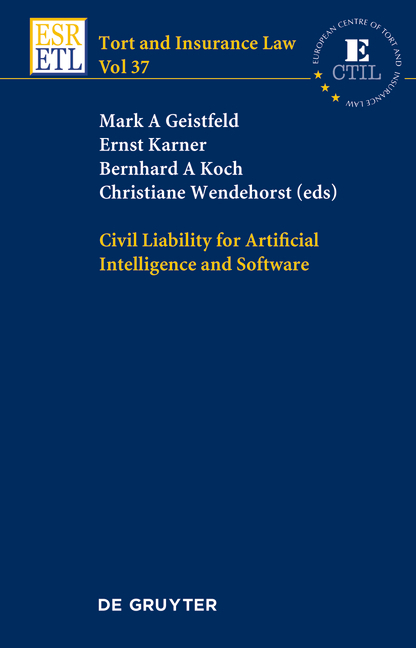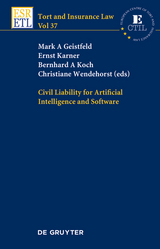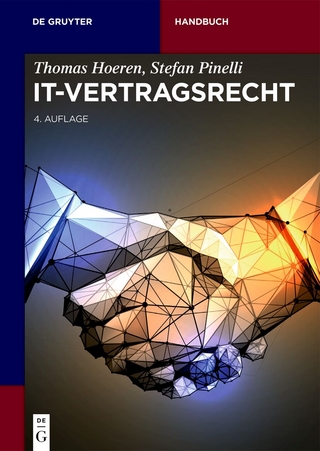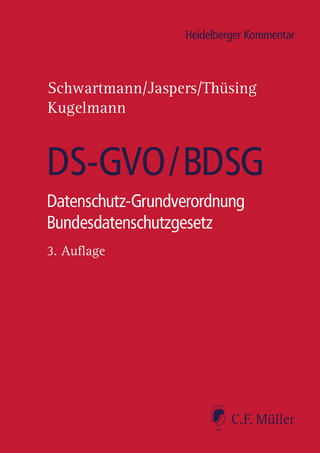Civil Liability for Artificial Intelligence and Software
Seiten
2022
De Gruyter (Verlag)
978-3-11-077534-1 (ISBN)
De Gruyter (Verlag)
978-3-11-077534-1 (ISBN)
Liability law is rapidly changing in quite a number of countries. This is due to various factors, which are interrelated to a large extent: changing case law and legislation as well as increased and still increasing technical and medical knowledge. As a result, various occupational diseases can, for example, be attributed to working conditions or personal injury to specific products. From the very moment that causation can be proven, the question arises of whether or not liability can be established‑ with far-reaching economic consequences for all parties involved. The rise of phenomena such as mass torts, multiple causation, joint and several liability or various heads of damages (like ecological damage and several diseases and affections) rapidly increases the interest in tort law. In the context of the interrelation between liability and insurance, attention must be paid to the question of whether certain liabilities are still coverable or not, and, if they are, to what amounts. (The question of jurisdictions is of growing importance as is the question of whether a specific liability can be covered by insurance. In this context, one should bear in mind that the affordability of tort law also requires safe and sound insurers. The recent past has shown that there is a limit to their financial stability.)
Initiated by the European Commission, the first study published in this volume analyses the largely unresolved question as to how damage caused by artificial intelligence (AI) systems is allocated by the rules of tortious liability currently in force in the Member States of the European Union and in the United States, to examine whether - and if so, to what extent - national tort law regimes differ in that respect, and to identify possible gaps in the protection of injured parties. The second study offers guiding principles for safety and liability with regard to software, testing how the existing acquis needs to be adjusted in order to adequately cope with the risks posed by software and AI. The annex contains the final report of the New Technologies Formation of the Expert Group on Liability and New Technologies, assessing the extent to which existing liability schemes are adapted to the emerging market realities following the development of new digital technologies.
Initiated by the European Commission, the first study published in this volume analyses the largely unresolved question as to how damage caused by artificial intelligence (AI) systems is allocated by the rules of tortious liability currently in force in the Member States of the European Union and in the United States, to examine whether - and if so, to what extent - national tort law regimes differ in that respect, and to identify possible gaps in the protection of injured parties. The second study offers guiding principles for safety and liability with regard to software, testing how the existing acquis needs to be adjusted in order to adequately cope with the risks posed by software and AI. The annex contains the final report of the New Technologies Formation of the Expert Group on Liability and New Technologies, assessing the extent to which existing liability schemes are adapted to the emerging market realities following the development of new digital technologies.
lt;strong>Ernst Karner, Vienna; Bernhard A. Koch, Innsbruck; Mark A. Geistfeld, New York.
| Erscheinungsdatum | 10.05.2022 |
|---|---|
| Reihe/Serie | Tort and Insurance Law ; 37 |
| Verlagsort | Berlin/Boston |
| Sprache | englisch |
| Maße | 155 x 230 mm |
| Gewicht | 710 g |
| Themenwelt | Recht / Steuern ► EU / Internationales Recht |
| Recht / Steuern ► Privatrecht / Bürgerliches Recht ► IT-Recht | |
| Schlagworte | Artificial Intelligence • insurance law • TIL • Tort law |
| ISBN-10 | 3-11-077534-4 / 3110775344 |
| ISBN-13 | 978-3-11-077534-1 / 9783110775341 |
| Zustand | Neuware |
| Informationen gemäß Produktsicherheitsverordnung (GPSR) | |
| Haben Sie eine Frage zum Produkt? |
Mehr entdecken
aus dem Bereich
aus dem Bereich
Telekommunikations- und Multimediarecht
Buch | Softcover (2024)
dtv Verlagsgesellschaft
CHF 38,95
Datenschutz-Grundverordnung Bundesdatenschutzgesetz
Buch | Hardcover (2024)
C.F. Müller (Verlag)
CHF 279,95




